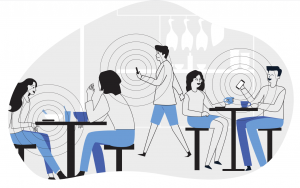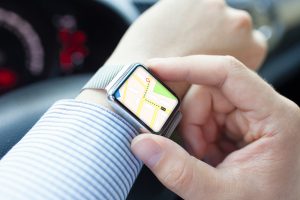After a 76-day lockdown in some parts of the nation, China reopened factories and offices resumed operation.
Meanwhile, the number of officially confirmed cases is plummeting in some countries, such as Germany and Thailand. Others yet are even considering lifting their lockdowns altogether.
For Singapore, our “circuit breaker” measure was due to be lifted on May 4, but it has been extended to June 1.
We are now about two weeks from the day when we can start easing back into our old routines—going to the office, dining out, or even hanging out at a friend’s place.
However, health minister Gan Kim Yong has warned that life will not “revert to normal” when the circuit breaker ends.
So what will the new normal look like? Here are ten things that will change because of COVID-19.
These things are here to stay
Physical distancing and face masks
Ever since China reopened, citizens are free to exercise and visit public places, but this reality is only possible because of the strict compliance with social distancing rules and the mandated wearing of face masks.
Physical distancing and wearing of face masks in Singapore are expected to be in place even after the COVID-19 pandemic is over.
Additionally, waiting rooms may be removed and hotels will have to ensure that their lobbies are not crowded, as customers would not want to stand close to each other before checking in. People may still be expected to stand at least 1 meter apart from each other when queuing up.
Restaurants would also have to reopen with more space between tables and temperature-screening measures. Patrons with temperatures exceeding 37 degrees Celsius would be refused entry.
Social anxiety
Before the pandemic, we enjoyed a certain level of trust and took a lot of things for granted.
We could travel almost anywhere without limitations and meet people without restrictions. But with the continued existence of COVID-19, we will not be able to travel that freely or access the rest of the world so easily, and will have to think twice before heading somewhere or meeting someone.
Read this: MindFi founder Bjorn Lee on rising demand for mental wellness services due to COVID-19
Singapore had to enter a semi-lockdown because the infection count was rising. This is likely because there were “covidiots” who did not observe social distancing measures, thereby causing the virus to spread further.
Singaporeans continued to crowd public places, disregarding the nation’s calls to stay at home. For example, many rushed to form long queues at bubble tea stores when the government announced the closure of these stores.
The pandemic is already exacerbating social anxiety and agoraphobia, so regaining that trust again will take time and we will continue to be wary of people after lockdowns are lifted.
Brand new habits
Personal hygiene is expected to continue to be a concern even after the pandemic is over.
We now know the importance of washing our hands frequently and refraining from touching our faces unnecessarily.
Post-pandemic, we should always carry sanitizer with us and disinfect surfaces frequently to keep the virus at bay.
These newly formed habits could linger way after the circuit breaker is lifted, leading to overall better hygiene. This might sound extreme, but handshakes may even be a thing of the past.
Frugality
Before COVID-19 emerged, I thought I needed to go out, eat good food, or enjoy a drink at least once a week to show that I am living a life.
Then COVID-19 came, and I found myself chilling at home, with none of that. It turns out that I can live just as well without my Friday nights in a restaurant or Saturdays in a bar.
Instead of obsessing over catching the latest movies at the cinema, I was content with chilling with Netflix.
That gym membership I had has also become pointless now. I realized that I can stay in shape with home workouts without spending a single dime.
This circuit breaker period has allowed me to save a lot of unnecessary expenditure on food, entertainment, and membership fees.
When the circuit breaker is lifted, I foresee myself coming back home right after work to enjoy a home-cooked dinner and going for runs in place of a visit to the gym.
Remote work arrangements
After the Ministry of Manpower mandated employers to facilitate remote work arrangements as much as possible to slow the spread of COVID-19, most of us found ourselves working from home.
The mass transition to work-from-home has shown that most companies can make the leap to remote work, but seemed to have put that off until the pandemic struck.
Furthermore, minister for trade and industry Chan Chun Sing has announced that working from home will continue to be the norm for the majority even after the circuit breaker ends.
Tech giants Facebook and Google said their employees can work from home until the end of the year.
Facebook has provided support to its employees in the form of a USD 1,000 (SGD 1,400) bonus, video-calling devices, and allowing them to take time off work.
On the other hand, Twitter said some of its employees can work at home forever.
This signals that work will be increasingly remote. Managers will have to trust employees to do their work and find a way to measure home productivity.
And here’s what will change
New rules in the office
Businesses that can allow their employees to work from home or telecommute have to continue to do so. If they are not able to, they would have to be closed.
If employees have to go back to the workplaces, employers have to make sure safety measures are implemented. These include cutting down on in-person meetings, staggering working hours, and sitting employees at least 1 meter away from other colleagues.
Regular hand-sanitizing should be observed, tabletops should be cleaned often and toilets should be disinfected often.

At the same time, we have to brace ourselves for lower economic activity as we ease back to work. The pandemic has damaged the economy severely.
Some struggling companies in the world are reducing working hours and pay, while some employees are working longer hours than before as they try to crank their business back into gear.
A shift in healthcare
We saw the importance of digital health solutions during these challenging times.
Digital health apps saw a massive growth in users. The use of telemedicine skyrocketed and eliminated physical doctor-patient visits.
These online consultations and diagnoses have proven to be very convenient, as they deliver medicine and medical leave slips to your doorstep.
Read this: WhiteCoat brings convenience to Singapore’s healthcare
Devices like digital stethoscopes, portable ECG monitors, and digital otoscopes can also be used at home, and the results are shared remotely with doctors. Such devices may become commonplace, shifting the point-of-care to the patient.
After the pandemic is over, virtual doctor appointments may become a new norm as we practice social distancing to help reduce the risk of infection.
New rules in schools
As schools in placed like Denmark, Taiwan, and mainland China reopen, staff members are taking students’ temperatures at the door and children with fevers are sent home.
Playgrounds remain closed in some schools, and desks in classrooms are spaced apart at a safe distance. When possible, teachers conduct lessons outdoors and in small groups.
Read this: Southeast Asian health authorities get creative with COVID-19 awareness campaigns
In Denmark, students have to wash their hands at regular time intervals. In Beijing, some students were also given personal thermometers and are required to take their temperature twice a day at school.
Schools are also disinfecting toys and classrooms twice a day to curb the spread of the virus. Students have lunch while maintaining a distance from each other.
When schools in Singapore reopen after the circuit breaker, it is highly possible that they will also implement such measures.
The amount of human interaction
Many face-to-face counselling services have set up online counselling features during the circuit breaker period.
However, patients have expressed that the experience is just not the same, adding that online counselling can never have the same results as in-person counselling sessions.
While video-conferencing has become a social platform for self-isolated individuals to connect with family and friends, it still lacks the human touch that we used to have before COVID-19.

Read this: Can fitness trackers warn us about the next COVID-19 attack?
We currently miss having meals with friends, grabbing coffee with co-workers, or even striking up a conversation with a friendly dog owner on the streets.
The mundane moments from the daily routines we used to have now feel like a luxury that people are eager to retrieve.
After the circuit breaker is lifted, I can foresee that we would not be taking social gatherings and invitations for granted anymore.
Digitalizing as much as possible
If this pandemic has taught us anything, it is that our life, as it used to be, is not sustainable for our planet.
We had to innovate and experiment with digital solutions, be it video calls for work meetings, home-based learning for students, and virtual events instead of in-person conferences. These proved not only to be effective, but also an environmentally-friendly way to operate in a connected world.
Read this: Tracking TraceTogether: Do the ends justify the means?
We are not saying everything should go digital, but it makes sense to make digital anything that is not more efficient in real life, if possible.
Telemedicine and digital health tech have already shown how this is a possibility. They just need to be adopted at a larger scale.
There is light at the end of the coronavirus tunnel
COVID-19 has shown us how humans can innovate and adapt existing technologies quickly to survive.
It also gave us a wake-up call: Do not take things for granted again.
We were careless about personal hygiene, thought that travel freedom was something we would not lose, and assumed that human interaction was a given.
The COVID-19 saga will come to an end one day. We will return to our usual lives and enjoy walking on the streets again, but that life after COVID-19 will be significantly different.
Moreover, reaching that point will depend on our current actions.
We must respect social distancing measures and reduce the spread of the virus. It is only when we do that, would we experience a post-pandemic world.
This article was first published by Vulcan Post.


